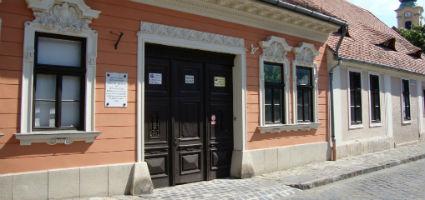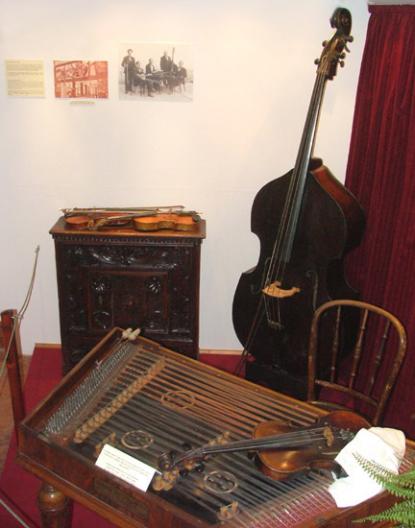2025. November 14. Friday
Hungarian Museum of Trade and Tourism - Budapest
 |
Address: 1036, Budapest Korona tér 1.
Phone number: (1) 212-1245
E-mail: mkvm@iif.hu
Opening hours: Tue-Sun 10-18
|
The exhibition has closed for visitors.
2004.11.26. - 2005.05.01.
Museum tickets, service costs:
|
Ticket for adults
|
1000 HUF
|
/ capita
|
|
Ticket for students
|
500 HUF
|
/ capita
|
|
Ticket for pensioners
|
500 HUF
|
/ capita
|
|
Ticket for families
(2 adults + 1 child)
|
2000 HUF
|
/ family
|
|
Ticket
|
640 HUF
|
/ capita
|
|
Guide
|
2000 HUF
|
|
|
Guide
|
3000 HUF
|
Gypsy music can be best understood in the socio-political context of the 19th century, when two landmark events contributed to its growth. The Reform era, with its Magyarising efforts and independence wars created audiences brimming over with national sentiment and seeking relief from tension and disenchantment in the first half of the century. Next, the political atmosphere in the 1860s Austro-Hungarian Monarchy and the events preceding the Compromise of 1867 created 'favorable' milieu.

Urbanization and embourgeoisement brought about the development of the service industry, including the hospitality industry which proved to be a fertile ground for Gypsy music. The musicians would always cater for the patrons' needs and play the fashionable music of the time. Consequently, the hospitality industry never developed its own musical genre; it had - as it still has today - catholic tastes in music.
In Gypsy musician families a good musician has great authority, and the trade is passed down the generations. Little Roma children will imitate their father playing his instrument and learn all the tricks of the trade.
The first Gypsy bands in Hungary emerged in the second half of the 18th century. The first known band, Panna Czinka, was led by a Gömör-county violinist. His ensemble consisted of the same number of musicians as bands do today: two violins, a double bass and a cimbalom. The first violin (leader), or prímás, plays the tune, and the second, or kontrás, the accompaniment in the form of chords played on unaccented beats. Statistical figures dating from 1782 reveal that there were 1582 active Gypsy musicians in Hungary at the time; by 1900 the number was 17 thousand, 3 thousand of whom lived in Budapest.
Gypsy musicians in the latter half of the 19th century enjoyed the respect of many different strata of Hungarian society. For professional musicians like Ferenc Liszt, Mihály Mosonyi and Ferenc Erkel not only associated Gypsy music with leisure, but was hailed as a special source of artistic inspiration. The foreign audiences, too, have greatly enjoyed this exotic and emotionally rich music, the improvisation and virtuoso performance of the Gypsy musicians.

Urbanization and embourgeoisement brought about the development of the service industry, including the hospitality industry which proved to be a fertile ground for Gypsy music. The musicians would always cater for the patrons' needs and play the fashionable music of the time. Consequently, the hospitality industry never developed its own musical genre; it had - as it still has today - catholic tastes in music.
In Gypsy musician families a good musician has great authority, and the trade is passed down the generations. Little Roma children will imitate their father playing his instrument and learn all the tricks of the trade.
The first Gypsy bands in Hungary emerged in the second half of the 18th century. The first known band, Panna Czinka, was led by a Gömör-county violinist. His ensemble consisted of the same number of musicians as bands do today: two violins, a double bass and a cimbalom. The first violin (leader), or prímás, plays the tune, and the second, or kontrás, the accompaniment in the form of chords played on unaccented beats. Statistical figures dating from 1782 reveal that there were 1582 active Gypsy musicians in Hungary at the time; by 1900 the number was 17 thousand, 3 thousand of whom lived in Budapest.
Gypsy musicians in the latter half of the 19th century enjoyed the respect of many different strata of Hungarian society. For professional musicians like Ferenc Liszt, Mihály Mosonyi and Ferenc Erkel not only associated Gypsy music with leisure, but was hailed as a special source of artistic inspiration. The foreign audiences, too, have greatly enjoyed this exotic and emotionally rich music, the improvisation and virtuoso performance of the Gypsy musicians.
